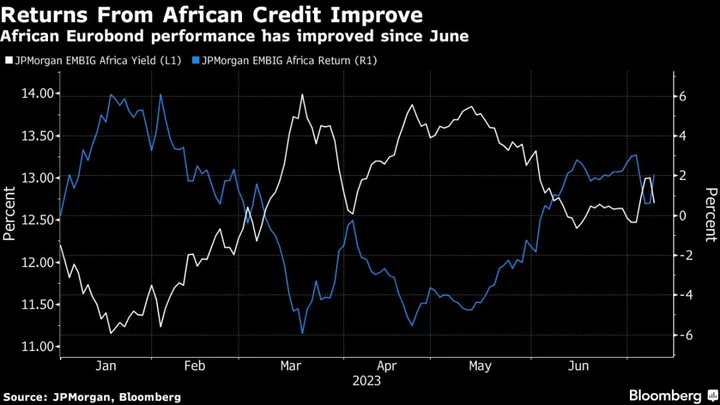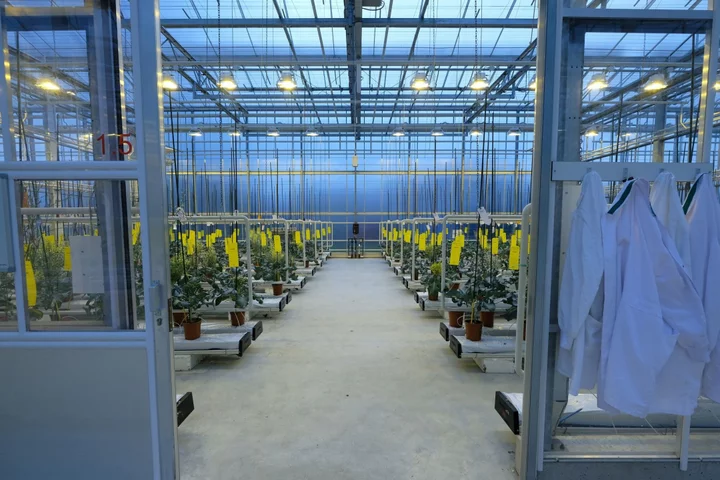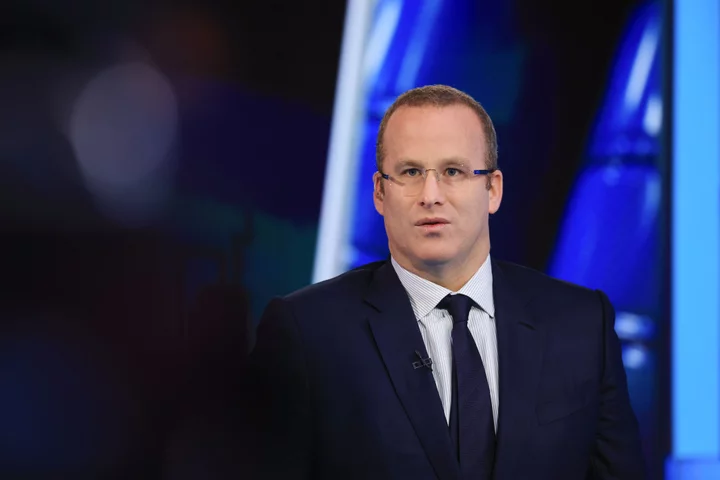The waiting game for some of the riskier emerging-market borrowers is coming to an end.
With higher interest rates appearing locked in for longer globally, incentives to wait for better deals are evaporating. Meanwhile, obligations to pay back maturing dollar debts are pushing some of the riskier sovereigns to look again at global bond markets, despite borrowing rates rising to double digits.
Emerging-market countries have about $13.7 billion in debt maturing through the end of 2023, and Turkey, Egypt, Paraguay, Romania and Chile are some of the issuers who’ve tapped international markets for more funds so far, contributing to a rebound across the asset class. Developing-nation sales have already exceeded the $103 billion of dollar and euro debt raised in all of 2022, data compiled by Bloomberg show.
Most of that issuance, however, has been from higher-rated sovereigns like Saudi Arabia and Poland. Investors are now looking to countries like Kenya, which like the rest of Sub-Saharan Africa, has been locked out of international debt markets for more than a year.
“High-yield sovereigns are fair game to issue this second half,” said Guido Chamorro, co-head of emerging-market hard-currency debt at Pictet Asset Management in London. “After all, they are the ones that need funding the most.”
The absence of Sub-Saharan African sovereigns from the market has been striking, with South Africa the last to borrow internationally in April 2022. Historically low rates after the global financial crisis had helped African countries tap international debt markets, and just two years ago, eurobond issuance from the region totaled $14 billion, according to the International Monetary Fund.
“The period of 2009 to 2019 was probably as close as we will get to ideal conditions for eurobond issuance from EM and frontier-market countries for the foreseeable future,” said Mark Bohlund, a senior credit research analyst at REDD Intelligence.
Tightening Cycle
Sales grounded to a halt after US policymakers embarked on their most aggressive tightening cycle in a generation. With risk conditions improving slightly since the US reported last week the lowest consumer-price growth in more than two years, a window has opened for potential issuers that couldn’t come to market in the first half of the year.
READ MORE: JPMorgan Asset’s Michele Says Global Bond Rally Is Just Starting
The narrowing spread between yields on African bonds over US Treasuries may encourage African sovereigns in need of foreign currency to consider issuing dollar debt, even at relatively elevated prices. At 818 basis points as of July 12, the spread has dropped to the lowest since March. It was over 1,000 basis points — a level widely considered to be “distressed” — as recently as May, according to JPMorgan Chase & Co. indexes.
“Africa credit market momentum may improve after a likely last Fed rate hike in July, as the odds of cuts in 2024 will increase amid lower US inflation and slower growth,” said Samir Gadio, head of Africa strategy at Standard Chartered Bank. “This backdrop could support lower-rated EM and African eurobond yields and reopen windows of opportunity to come back to the market; but for single-B African sovereigns, yields will at least need to fall into 9% territory, or ideally below, before issuance becomes realistic.”
Adding urgency to the need to find dollar funding, South Africa, Kenya, Senegal, Ivory Coast, Ethiopia and Gabon will have to repay a cumulative total of $7.25 billion next year. Kenyan authorities are already making moves to cover for a $2 billion repayment due in June, meeting with potential investors in London last week to discuss options including syndicated loans, a bilateral commercial loan, a sukuk bond or samurai bond.
The yield on Kenya’s 2024 note was 12.69% as of Friday, down from as high as 21.4% in May, but still around double the levels at which it traded when issued in 2014. Those higher rates are something that lower-rated borrowers will just have to get used to, according to Benedict Oramah, the president of Afreximbank, the Cairo-based pan-African multilateral lender.
‘New Normal’
“People are beginning to understand that what looks like a shock is a new normal,” Oramah said. “Those who can go to the syndicated loans market will go there, but it’s becoming increasingly obvious to many that they have to bite the bullet.”
That’ll mark a change in the emerging-market bond landscape, as investment-grade sovereigns have dominated borrowing so far this year. Saudi Arabia issued the largest amount of debt, accounting for 15% of the total, followed by Poland, which jumped from 12th largest last year to complete $8.8 billion worth of deals so far this year.
READ MORE: Ukraine Bond Rally Has Legs as Economy, Flows Improve, BofA Says
Deutsche Bank strategist Anthony Wong sees emerging-market issuance reaching as high as $150 billion by year-end. The Institute of International Finance earlier this year predicted $47 billion of bond sales from frontier markets for 2023.
“Frontier markets, which include most African economies, will likely find it generally harder to come to market still,” said Samantha Singh, senior markets strategist at Rand Merchant Bank in Johannesburg. “Even those with big reform agendas could struggle to issue eurobonds in the near term unless they do pay up a bit.”
Damian Sassower, chief emerging-markets fixed-income strategist for Bloomberg Intelligence, predicts that governments that are able to continue tapping their domestic markets will do so for as long as possible.
For lower-rated countries, progress on IMF deals and the so-called Common Framework — which includes China in creditor talks — “opens doors for very distressed issuers, especially frontier Africa, to return to credit markets before year-end,” Sassower said. “It could be significant, considering the number of distressed borrowers and size of debt rollovers required.”
What to Watch
- China has a slew of data including a key policy rate decision, retail sales, industrial production, investment and GDP
- Mexico will release data on its international reserves; Philippines balance of payments
- Argentina and Colombia will release trade data for June and May respectively
- South Africa, Turkey and Russia will announce their interest rate decisions
(Updates with Gadio quote under ‘Tightening Cycle’ subhead.)









